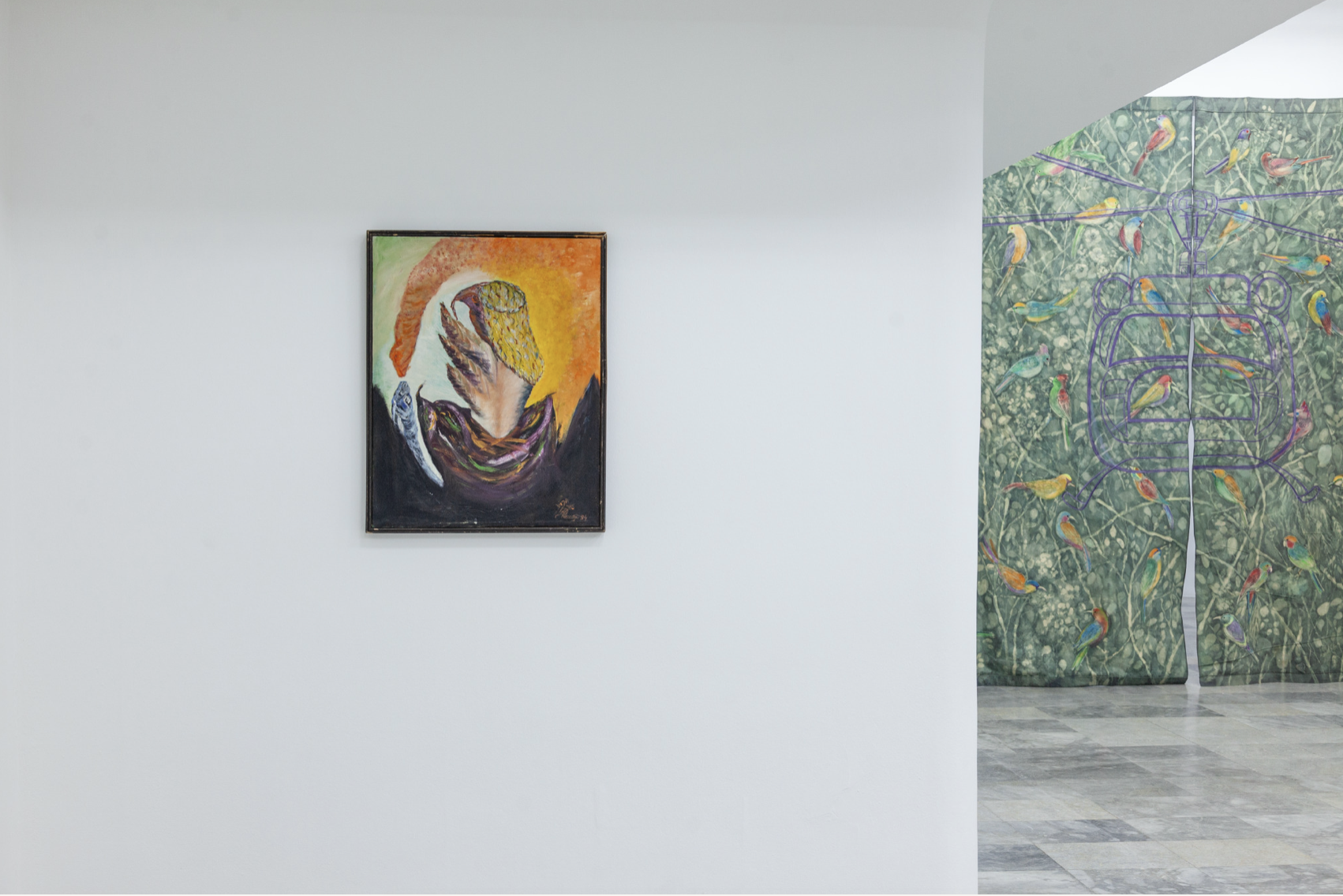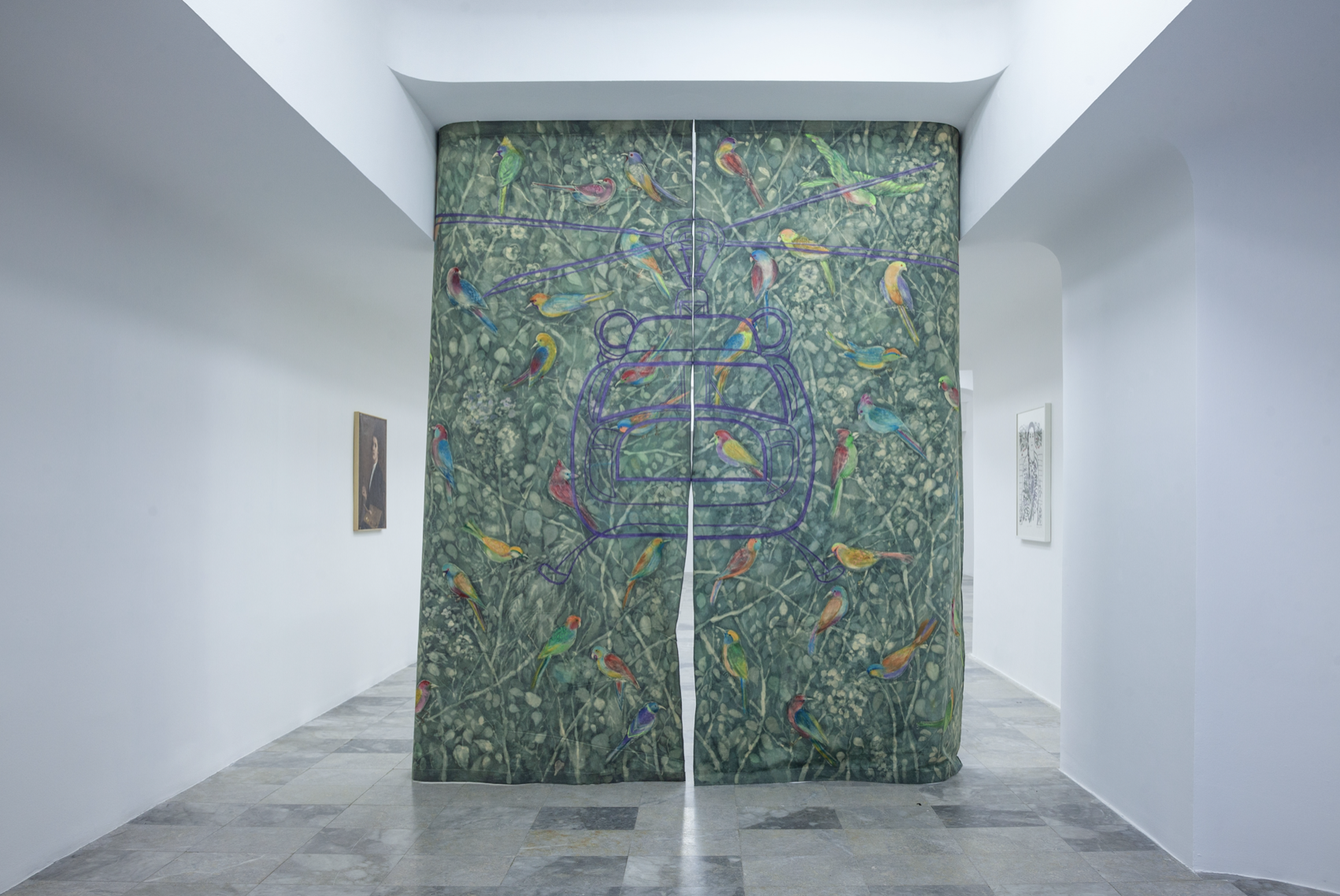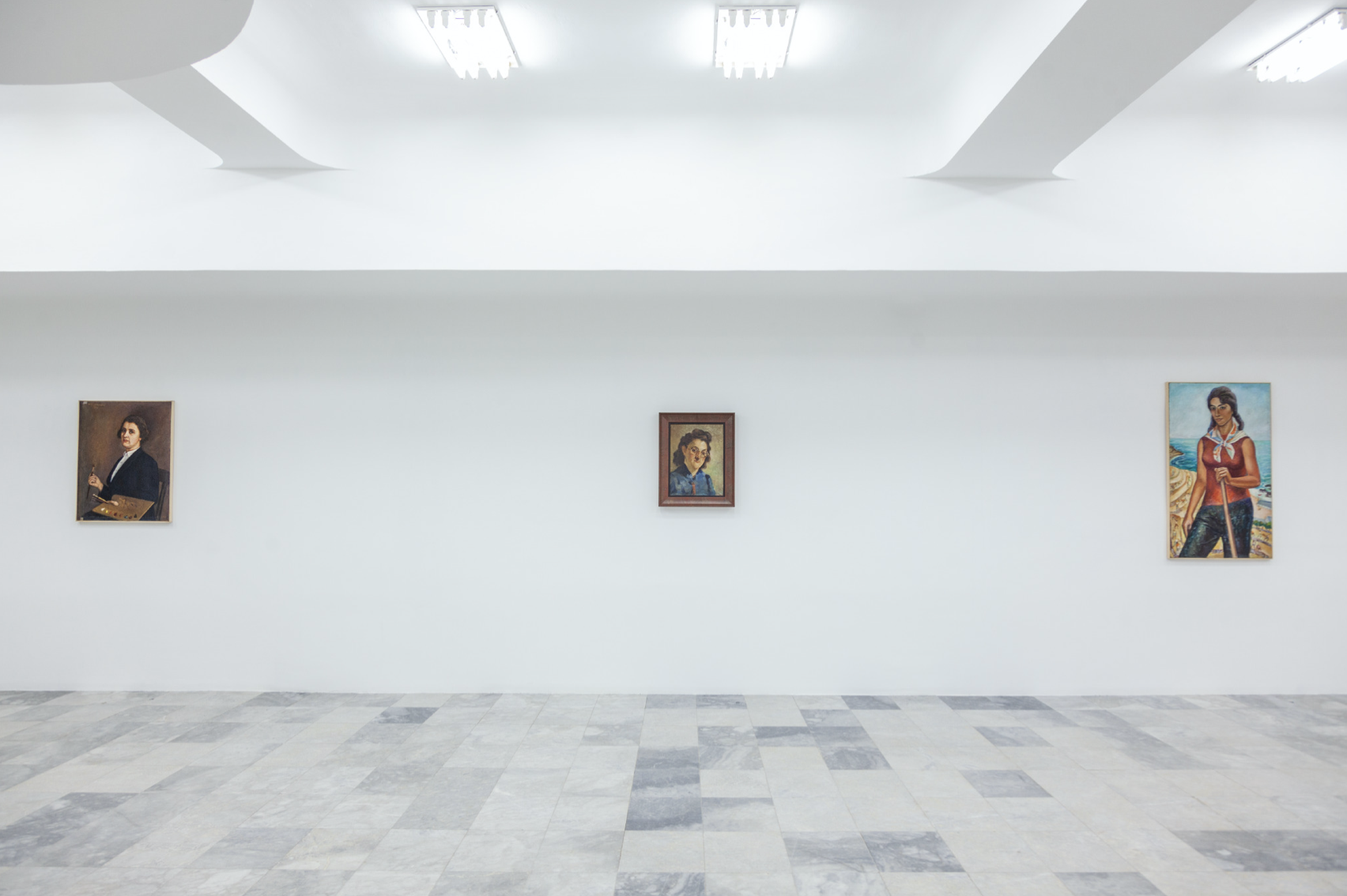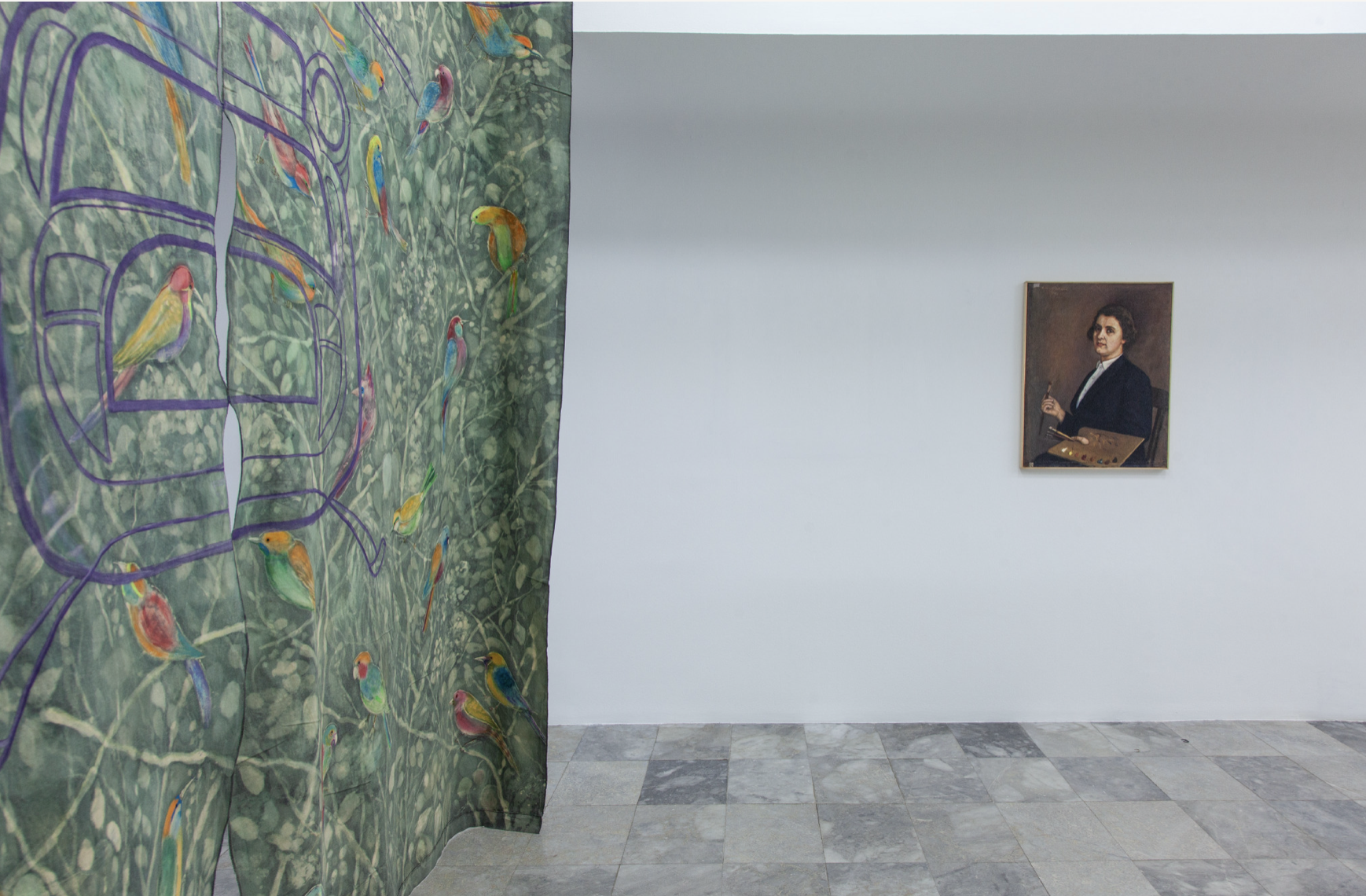Ambitions
The exhibition Ambitions maps out artistic positions and individual methodologies of women artists in Albania, Kosovo and the diaspora. The exhibition seeks to expand histories of women in the arts and to explore new critical terrains to recover and reimagine women's subjectivities in the history of arts.
As we acknowledge multiple locations where women's agency is constituted and the political and cultural context in which their art practice carries meaning, and aware of how gender essentialisms distribute and fix cultural meanings of what women are and what they can achieve. We are seeking to chart women’s non-unified narratives, individual methodologies and artistic positions and to insert them back into historical visual arts narratives.
The exhibition provides a platform to discuss these works produced by women and to consider diverse artistic trajectories that women artists have weaved in the context of post-Second World War until today. The exhibition draws on arts and culture research and collections of the National Gallery of Arts in Tirana and National Gallery of Kosovo in Prishtina closely examining the conditions and aesthetic regimes that have dictated artistic production and expressions, as well as women's place in them.
The exhibition presents images of intersecting and overlapping practices and debates too complex for any linear narrative to contain. To avoid the pitfalls of linear historicizing, the exhibition is not in chronological order. Instead, the narrative follows the nonlinear course of the women’s art practice. Individual ambition was one of the main sources that sustained women artists. Their drive helped open arts and culture to other art practitioners.
Not every displayed work emerged from a feminist context. Instead, some intersect with feminist thought by problematizing patriarchal order. Through flexible and self-aware praxis, they show commitment to renegotiating gendered social constructs, and offer differing possible futures for women in the arts.
The exhibition Ambitions is intended to be a contribution to local feminist discussions, rather than serve as an end in and of itself. It rests on four conceptual structures: Archives of the body; Grammar of memory; Willful anachronisms; and Poetic compendium.
ARCHIVES OF THE BODY
From multidisciplinary perspectives, the works explore the body, which is always-in-the-making, gendered and subject to alterations by an array of cultural and political factors. Countering these assumptions has made the body (in all its multiplicity) a discursive entity. By approaching the body as an archive of affects, performance and embodied politics through individual methodologies, women artists have not only reclaimed corporeality but used the body as a site to counter cultural essentialisms. Moreover, the works that are part of this conceptual frame rewrite and reconfigure the body, turning it into a site of accumulation and transmission. Flexible strategies with which to narrate and pluralize the understanding of the body emerge.
GRAMMAR OF MEMORY
explores modes of visual narrativization based on memory – personal or collective – that women artists have employed to reclaim their agency and their place in history. The act of narration not only shapes the past, but also becomes a mode of constituting the self. Wrestling with histories of different scales that fail to include women, this section brings together works that question, intervene and reimagine what is thought of as a shared history. Weaving less visible perspectives into larger historical narratives, they amplify a multitude of personal voices framed within a larger social context. Moreover, by highlighting continuities and disruptions of memory, the works question inner workings of memory within the patriarchal setting and the absence of women’s subjectivity that history narratives create.
WILLFUL ANACHRONISMS
Intended as a dialogue between artistic positions of women of different generations and geographies, the artwork represents a willful gesture of inconsistency toward authority, patriarchy, linearity and the imposed order. The dissonant temporalities brought forth by these works and an anachronistic curatorial approach encourage new modes of narrating and relationship building. Their artwork forges intergenerational feminist cultures. Creating such a dialogue enables us to understand and imagine a differently configured world.
POETIC COMPENDIUM
The conceptual grid of the Poetic Compendium brings together works that appeal visually and have been created from the perspective of the art producer: primarily not as a reaction to outside circumstances of their times but as embodiments of subjectivity. Following the poetic approach of the producers, we too, in the spirit of Boris Groys, have selected works that call for analysis and appeal to poetic, rather than aesthetic experiences. The latter being the spectator's demand for an aesthetic experience: the beauty, the sublime, and the sensual pleasure. By placing an emphasis on the poetics, the artworks’ concern is not on providing pleasure, rather in demonstrating the minimal conditions within which self- perception is produced.
Artists
Silva Agostini, Brigita Antoni, Alma Bakiaj, Lumturi Blloshmi, Lirije Buliqi, Liljana Çefa, Donika Çina, Flaka Haliti, Blerta Hoçia, Majlinda Hoxha, Shpresa Faqi, Fitore Isufi – Koja, Ledia Kostandini, Edona Kryeziu, Hyrije Krypa, Iva Lulashi, Diana Miziri, Silvi Naçi, Matilda Odobashi, Greta Pllana, Edit Pula, Nurhan Qehaja, Alketa Ramaj, Miradije Ramiqi, Anila Rubiku, Merita Selimi, Marina Sula, Eli Xoxa, Alije Vokshi, Alketa Xhafa Mripa, Rudina Xhaferi, Violeta Xhaferi, Sofia Zengo Papadhimitri, Androniqi Zengo Antoniu, Valbona Zherka.
Curated by Adela Demetja & Erëmirë Krasniqi
Exhibition produced by National Gallery of Arts, Tirana & The National Gallery of Kosovo, Prishtina



